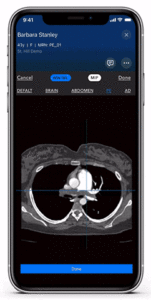
Viz.ai recently announced it has received US Food and Drug Administration (FDA) 510(k) clearance for an automated right ventricle (RV)/left ventricle (LV) ratio algorithm, a new component of the Viz pulmonary embolism (PE) solution.
According to a company press release, the algorithm is designed to quickly and accurately measure the diameter of the ventricles of the heart to provide the ratio of the maximum RV diameter versus the maximum LV diameter.
Launched in November 2021, Viz PE uses deep learning to identify suspected central and segmental pulmonary emboli. With the integration of the RV/LV algorithm, the solution now includes an automated assessment of potential right ventricle dilation. Viz.ai claims that the information further enables care teams to ensure that the right clinical decision is made at the right time—no matter where the patient resides in the healthcare system—to ensure quick and appropriate care.
“The Viz.ai automated CT [computed tomography] scan clot detection system improves diagnostic acumen and expedites care for patients with acute pulmonary embolism,” said Kenneth Rosenfield (Massachusetts General Hospital, Boston, USA), co-founder of the PERT Consortium. “But the true killer in patients with PE is failure of the right heart. With this clearance, the Viz PE Solution now includes both detection of clot in the lungs and degree of strain on the right heart. This will enable clinicians to quickly triage patients and treat them appropriately, by providing a powerful tool for early detection and risk stratification. This expedited critical decision-making will undoubtedly save lives.”
“With AI-powered enhanced image interpretation that dramatically improves the quality and speed of mobile image viewing—and caregiver communication—Viz PE already helps identify suspected pulmonary embolisms in under two minutes,” said Jayme Strauss, chief clinical officer, Viz.ai. “The addition of the RV/LV algorithm is expected to further aid care teams to quickly make the right clinical decision for their patients, improving outcomes and saving lives.”












